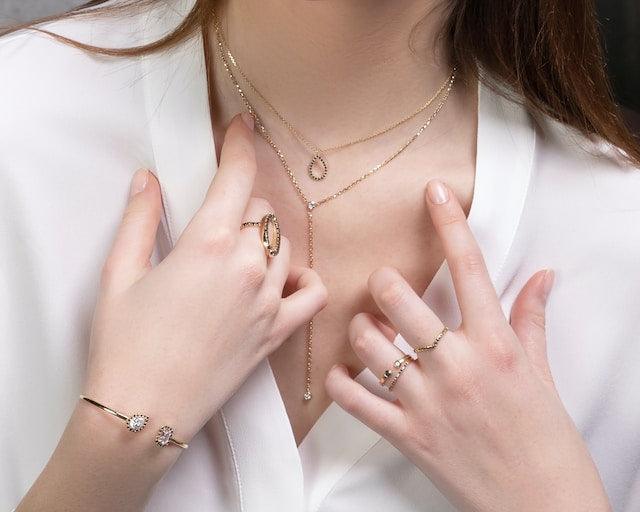
Why gold and silver jewelry endure
Share
The history of gold and silver jewelry dates back to ancient civilizations, such as the Egyptians, Greeks, and Romans. These civilizations valued gold and silver for their rarity, beauty, and durability, and used them to create elaborate and intricate jewelry pieces.
In ancient Egypt, gold was considered a symbol of the sun and was associated with royalty and divinity. The Egyptians used gold to create a wide variety of jewelry pieces, including necklaces, bracelets, earrings, and rings. They also used silver to create less ornate jewelry, such as simple rings and amulets.
The ancient Greeks also valued gold and silver jewelry, which they often decorated with intricate designs and gemstones. They believed that jewelry had magical properties and could protect the wearer from harm.
Similarly, the ancient Romans used gold and silver to create jewelry pieces that were both ornate and functional. They also introduced new techniques, such as the use of enamel and gemstone settings, to create more intricate and detailed jewelry.
During the Middle Ages, gold and silver jewelry continued to be popular, and new styles and techniques emerged, such as Gothic jewelry, which featured intricate designs and motifs inspired by the architecture of Gothic cathedrals.
In more recent times, the popularity of gold and silver jewelry has continued to grow, and new styles and trends have emerged. Today, gold and silver jewelry are available in a wide variety of styles, from classic and traditional to modern and edgy, and are worn by people of all ages and backgrounds.
People like gold and silver jewelry for many reasons, including:
- Beauty: Gold and silver jewelry are valued for their beauty and luster. These metals have a natural shine and sparkle that is highly prized, and they can be crafted into a wide variety of styles and designs.
- Durability: Gold and silver are highly durable metals that can withstand the wear and tear of everyday use. This makes them ideal for creating jewelry that can be worn frequently and last for years.
- Value: Gold and silver are valuable metals that have been used as currency and traded for centuries. This adds to their perceived value and prestige, making them a desirable choice for jewelry.
- Tradition: Gold and silver jewelry have a long history and are often associated with tradition and culture. For many people, wearing gold or silver jewelry is a way to connect with their heritage or express their cultural identity.
- Versatility: Gold and silver jewelry can be worn for a wide variety of occasions, ranging from casual outings to formal events. They can also be mixed and matched with other jewelry pieces to create a unique and personalized look.
Overall, gold and silver jewelry are highly valued for their beauty, durability, value, tradition, and versatility, making them a popular and timeless choice for many people.
Future trends
It is difficult to predict with certainty what the future trends of gold and silver jewelry will be, as they are subject to the whims of fashion and changing consumer preferences. However, there are some indications of potential future trends in the jewelry industry:
- Sustainable and ethical practices: As consumers become increasingly aware of environmental and social issues, there is a growing demand for sustainable and ethical jewelry. This may lead to an increased focus on using recycled materials, responsibly sourced gemstones, and fair labor practices in the production of gold and silver jewelry.
- Minimalism: In recent years, there has been a trend towards minimalist and understated jewelry designs. This trend may continue, with consumers opting for simpler and more timeless designs that can be worn for a variety of occasions.
- Personalization: Many consumers are looking for ways to express their individuality through their jewelry. This may lead to an increased demand for customized and personalized gold and silver jewelry that reflects the wearer's unique style and personality.
- Technology: As technology continues to advance, there may be opportunities to incorporate new materials and techniques into the production of gold and silver jewelry. For example, 3D printing and other digital manufacturing technologies may allow for greater customization and experimentation in jewelry design.
- Bold and unconventional designs: While minimalist designs may continue to be popular, there may also be a growing demand for more bold and unconventional gold and silver jewelry designs that make a statement and stand out from the crowd.
